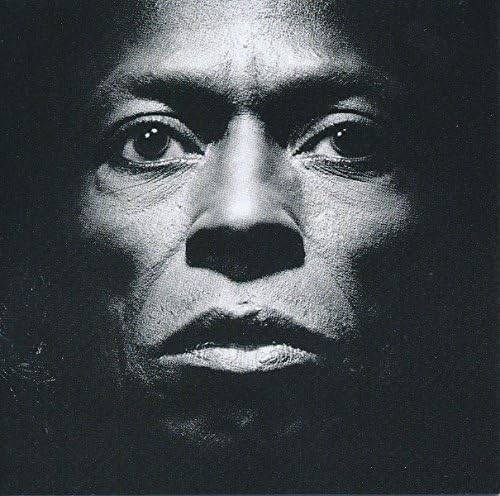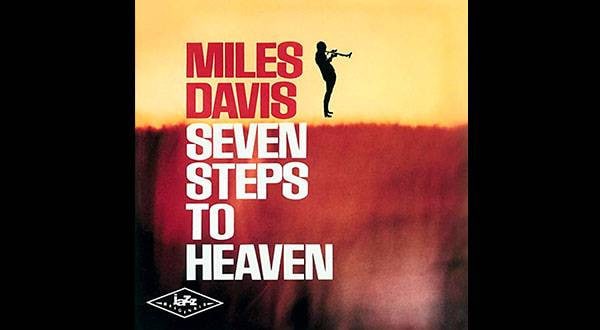Miles Davis was one of the most successful and forward-thinking musicians in jazz history. He is among the most highly respected jazz musicians of all time.
This time, the focus is on Miles Davis and Tommy LiPuma.
In 1986, Tommy LiPuma produced Miles Davis' album TUTU.
What happens when a legendary musician and a historic producer collaborate? Let’s explore the answer through TUTU.
Miles Davis: The Musician
Miles Davis was born in 1926 in Illinois, in the Midwestern United States. He was raised in a wealthy family—his father was a dentist, and his mother was a music teacher. At the age of 13, he received a trumpet as a birthday gift from his father. While still in high school, he began performing at live music venues, and by the age of 18, he had already played alongside jazz legends Dizzy Gillespie and Charlie Parker.
He later enrolled at the Juilliard School in New York. It was during this time, while living and working closely with Charlie Parker, that Miles Davis embarked on his professional career.
Miles Davis constantly pushed the boundaries of music, refusing to be confined by traditional jazz methods. He pioneered modal jazz, exploring new musical possibilities beyond conventional structures.
While staying true to straight-ahead jazz, he also embraced elements from other genres, incorporating funk and beyond. He was not limited to acoustic instruments, actively integrating electric guitar, electric bass, electric piano, and synthesizers into his sound.
Miles' music was a reflection of his artistic vision and unwavering pride. This was the essence of Miles Davis Music.
■ Recommended Album: TUTU (1986) – Miles Davis

Miles Davis' TUTU was his first album after moving from CBS to Warner Bros., marking a late-career masterpiece. Released during the peak of the digital era, the album is filled with a distinctly digital sound. However, it is far from a shallow collection of sampled sounds. The music remains undeniably Miles, wrapped in a majestic and atmospheric mood.
I believe that mood was largely shaped by the presence of Tommy LiPuma.
Miles had such a powerful influence that, even when contributing to someone else’s album, his presence would dominate the entire work—turning it into a Miles Davis album.
Cannonball Adderley’s Somethin’ Else is a classic album featuring the standard masterpiece Autumn Leaves. While the album is officially credited to Cannonball, Miles Davis is part of the lineup.
Yet, when listening to the album, all you can feel is Miles' presence.
That’s the kind of musician Miles Davis was—wherever he played, he would inevitably shape the entire album in his own image.
The foundation of TUTU was created by Miles Davis’ longtime collaborator, bassist Marcus Miller. Miller produced the backing tracks using programmed instrumentation, over which Miles layered his signature muted trumpet, bringing the album to life.
While TUTU can be considered a collaboration with Marcus Miller, no matter how you listen to it, it is unmistakably a Miles Davis album.
The album title TUTU is named after Desmond Mpilo Tutu, a leading figure in the anti-apartheid movement and the recipient of the 1984 Nobel Peace Prize.
This kind of naming was a signature move of Miles Davis. He often used proper names as song titles, as seen in tracks like John McLaughlin (named after the guitarist) and Jean Pierre (named after a photographer). TUTU follows that same tradition.
The album’s artwork also plays a crucial role in enhancing its mood. The iconic close-up shot of Miles Davis was taken by the legendary fashion photographer Irving Penn. This ultra-tight composition uniquely emphasizes Miles' presence within the album.Even the back cover exudes an enigmatic aura—Miles looks almost otherworldly. Have we ever seen an album cover quite like this? And it’s in black and white. Instead of relying on color, the decision to use monochrome photography adds to its intensity.
Only masters of advertising and fashion photography—such as Irving Penn, Helmut Newton (Lime & Reason by Missing Persons), or Richard Avedon (This Time by Al Jarreau)—could achieve such a striking result. The overwhelming presence and power of Miles Davis are perfectly captured in this album cover.

< Photographed by Helmut Newton >

< Photographed by Richard Avedon >
In this sense, TUTU was a meticulously crafted project, and it’s easy to imagine that its production costs were substantial.
The album’s sound heavily features digital synthesizers and sampling synthesizers, which were popular at the time. Even in live performances, the band used top-selling Japanese digital synths, such as the Yamaha DX7 and the Roland D-50, bringing the album’s futuristic sound to the stage.
Miles Davis was never bound by the confines of jazz. He had no hesitation in interpreting pop songs like Michael Jackson’s Human Nature and Cyndi Lauper’s Time After Time.
This clearly shows that Miles Davis did not see music through the lens of genre—he embraced it without boundaries.
It’s unclear exactly how Tommy LiPuma contributed to this album, but one thing is certain—beyond the unmistakable Miles Davis mood, TUTU carries a sense of grandeur, as I mentioned earlier.
I believe it was Tommy LiPuma who orchestrated this grandeur. While the album is undeniably infused with Miles’ signature sound, LiPuma brought in cutting-edge elements of the time, elevating the music with sophistication, luxury, and a majestic atmosphere. This was a touch that only Tommy LiPuma could achieve.
Recommended Track: "TUTU"
As the album title suggests, TUTU is dedicated to anti-apartheid activist Desmond Mpilo Tutu. My band once covered this song.
I remember wondering—where does a melody like this even come from? It was unlike anything I had ever heard before.
The track opens with a signature sampled sound of the era, the orchestral hit (Orch Hit). A sound that could easily come off as cheap instead becomes a tool for grandeur, adding a majestic quality to the composition.
I can’t be the only one who senses the presence of the great Tommy LiPuma behind this brilliance.
Featured Artists, Album, and Recommended Track
- Artists: Miles Davis, Marcus Miller, and others.
- Album: TUTU
- Track: "TUTU"
The “sound & person” column is made up of contributions from you.
For details about contributing, click here.













![[2025 Latest Edition] Choosing a Synthesizer/Popular Synthesizers Ranking](/contents/uploads/thumbs/2/2022/9/20220916_2_19446_1.jpg)



 PLAYTECH 管楽器特集
PLAYTECH 管楽器特集
 トランペットのお手入れ
トランペットのお手入れ
 トランペットの選び方
トランペットの選び方
 用途で選ぶ!鍵盤楽器の種類
用途で選ぶ!鍵盤楽器の種類
 サウンドハウス虎の巻 管楽器入門ガイド
サウンドハウス虎の巻 管楽器入門ガイド
 キーボードスタートガイド
キーボードスタートガイド















